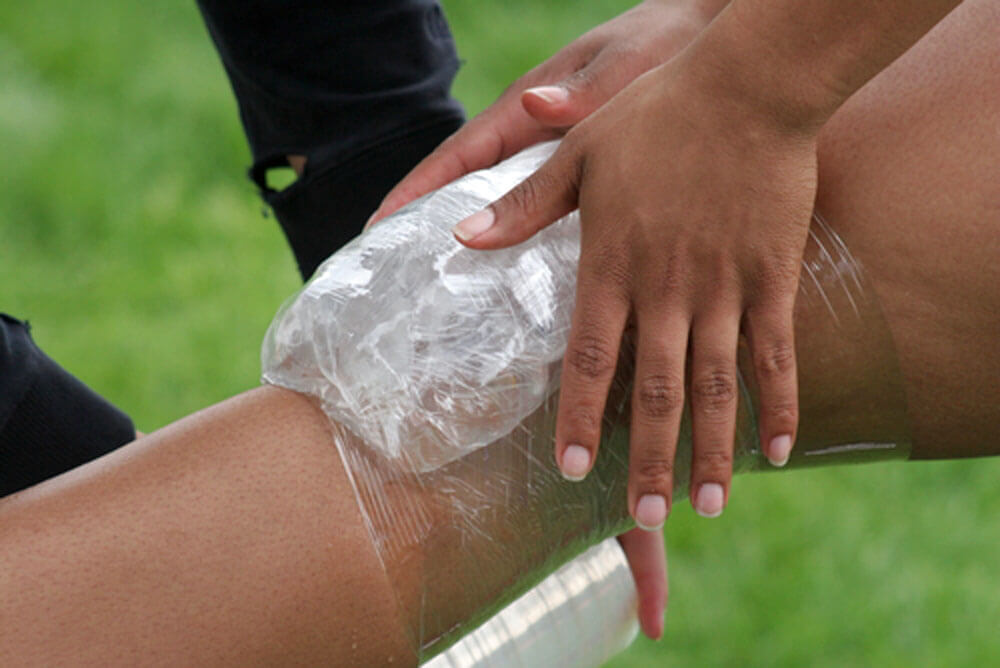The Truth About Icing…What We Still Don’t Know!

By Dr. G. John Mullen
SANTA CLARA – Icing has been under scrutiny over the past few years and I’m a tad late on the whole icing debate. Excellent and inquisitive posts have already accrued, so why am I finally coming to the discussion?
Although previous posts were well-researched and in-depth, I feel they missed a few key points [Mobility WOD; 10 Reasons – Icing Injuries is Wrong]. This isn’t a knock at my online peers, but implies the complexity of this seemingly simple topic. It also suggests the unknown, something clients and patients hate to hear and something health care professionals, trainers, and voodoo doctors hate even more to admit. Nonetheless, icing is a tough topic which is poorly understood and something I’m adding to the COR Swimmer’s Shoulder System.
The Various Reasons For Icing
Icing for athletes is poorly researched and misinterpreted because because the reasons why people use ice varies greatly. Do you have acute pain for training? Do you have acute pain from an injury? Do you have chronic pain from an injury? Do you have acute pain from training and a competition? Do you have an acute injury, but want to continue to train? These are only some of the factors I deal with in my physical therapy and personal training practice.
I have patients of all shapes, skills, and goals. If I suggest icing, it depends on these factors. Unfortunately, the research doesn’t account for all these factors, as it is hard to control for different factors. Also, the research doesn’t accurately understand the inflammatory process of a human after an acute injury. Think about it: Who would sign up for a study where you sprain your ankle and track the inflammatory response? I know none of my elite dryland swimmers are interested, and even my sedentary physical therapy patients wouldn’t be interested. Therefore, we group acute inflammation from an injury and acute inflammation from training into one box. Unfortunately, these boxes should be different, as inflammation from training (which causes soreness from breaking down the z-disks during cross-bridging) is likely more acute than inflammation from an acute injury.
Once again, grouping everything together and saying icing is wrong is likely an overstatement. Based on the current unknowns from research and highly variable goal and phase of the inflammation, we clearly don’t have all the answers. On top of this, I haven’t even mentioned individual genetic inflammatory response. This is a tad out there, but genetically there are different inflammatory responses in the cardiovascular system, so why not in the muscular system? This is an area I wish I knew more about, but is it too much to imagine that some people have different inflammatory responses to injury and training than others? Also, people could have a different response to ice than other. Although the research suggests ice does not improve inflammation for the majority, are we confident it doesn’t help some people? On top of this, ice does have a nocioceptive effect (pain-reducing) which can help function, and isn’t this really the goal? If you have pain during movement or pain all the time, removing that is the goal. Once that is resolved, you can get precise and look at reducing your inflammation with diet and lifestyle. Too often we medical professionals express the importance of a cellular function, though improving general movement and quality of life is much more important.
Who cares about inflammation if you can’t walk!
With all this ranting, you’d probably think I give all my patients ice packs as they walk in the door, but I don’t even have ice at my physical therapy clinic. Why waste someone’s time with something they can do on their own? If I don’t hand out ice, you think I must recommend it to a lot of swimming physical therapists or swimming personal training clients. Once again, a big stinking nope.
I recommend ice in a few scenarios:
- Have high pain and need some relief? Try some ice. It won’t cure the pain, but it can help for about 60 minutes. This window could help you move better, preventing other musculoskeletal injuries and compensations.
- Have an important practice or competition and need relief? Try some ice. It may limit inflammation and muscular strength and gains, but oh well, you’re not looking for a training response, but performance.
Once again, this is a dense topic and will involve much more study.




I applaud the differentiation between chronic and acute.
Traditional Chinese Medicine has the answer to this ongoing discussion.
Ice is good only for the intial injury, after that it prevents proper circulation and rapid healing.